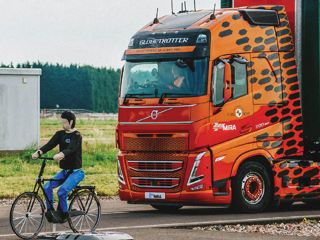A debate at the Fleet200 Strategy Network meeting in May saw fleet decision-makers asked about their use of driver and vehicle data. Here is selection of comments made.
“We’re currently driving a five-year plan to completely change our focus on data, as it’s a hotch-potch of information for historical reasons, so that we do know what’s going on.
“But it boils down to a question of what do you need data for? That should define your strategy, be it for wholelife cost analysis, driver behaviour, or vehicle brands helping to define choice lists.”
“We probably use about 2% of the data we collect. It’s focussed on exception reporting."
"In the event of an accident when a driver tells me they were ‘only doing 30mph’, I can say you were doing that when your crashed, but prior to the accident…”
“There are massive differences in driver behaviour that can be singled out in data use. For example, vehicle wear and tear data is of significant value to singling out drivers for training to address harsh braking, sharp cornering, lost wing mirrors etc that can inform operational maintenance demands. Or you can change the routes your drivers take for ones that are easier to navigate.”
“Real-time data is ideal in routing or re-routing drivers to where a need is, perhaps based on a conversation with a customer if you’re a delivery firm, or simple vehicle/driver utilisation demands. I don’t have the time to watch dots on a map to see where each and every driver is, and if they go off their route to go to the bank or the doctors.”
A debate at the Fleet200 Strategy Network meeting in May saw fleet decision-makers asked about their use of driver and vehicle data. Here is selection of comments made.
“We’re currently driving a five-year plan to completely change our focus on data, as it’s a hotch-potch of information for historical reasons, so that we do know what’s going on.
“But it boils down to a question of what do you need data for? That should define your strategy, be it for wholelife cost analysis, driver behaviour, or vehicle brands helping to define choice lists.”
“We probably use about 2% of the data we collect. It’s focussed on exception reporting."
"In the event of an accident when a driver tells me they were ‘only doing 30mph’, I can say you were doing that when your crashed, but prior to the accident…”
“There are massive differences in driver behaviour that can be singled out in data use. For example, vehicle wear and tear data is of significant value to singling out drivers for training to address harsh braking, sharp cornering, lost wing mirrors etc that can inform operational maintenance demands. Or you can change the routes your drivers take for ones that are easier to navigate.”
“Real-time data is ideal in routing or re-routing drivers to where a need is, perhaps based on a conversation with a customer if you’re a delivery firm, or simple vehicle/driver utilisation demands. I don’t have the time to watch dots on a map to see where each and every driver is, and if they go off their route to go to the bank or the doctors.”
The potential use of vehicle to grid
“Our vehicles are in use 24-hours a day, making their charging critical. I wouldn’t see our vehicles putting energy back into the system for that reason.”
“If I was selling energy at a higher price than what I was paying for it then I might consider V2G, otherwise I can’t see it working.”
Login to continue reading.
This article is premium content. To view, please register for free or sign in to read it.






















Login to comment
Comments
No comments have been made yet.